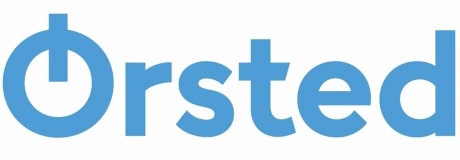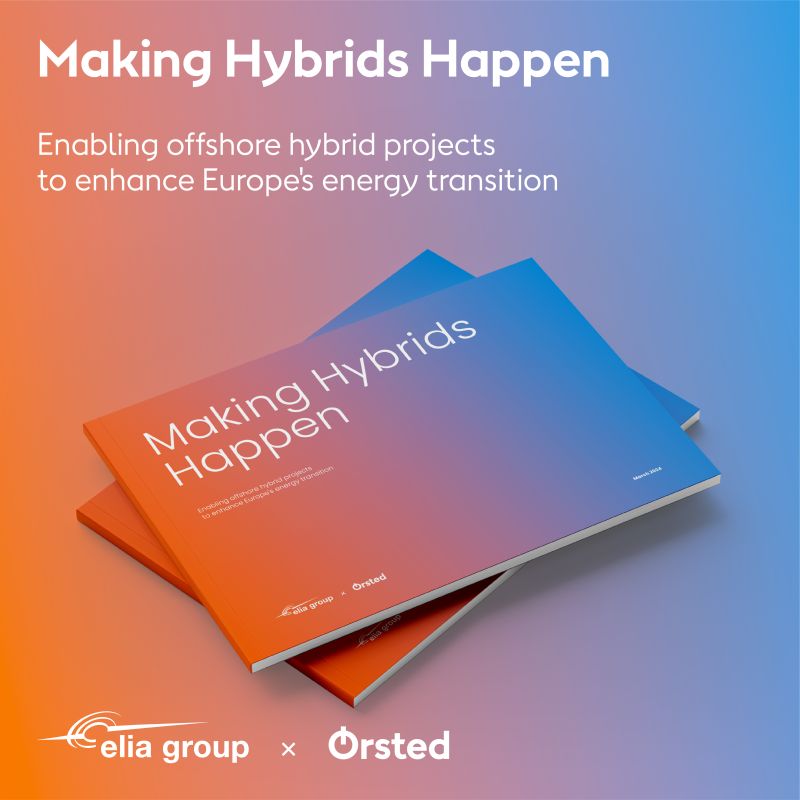Making Hybrids Happen
A joint paper by Elia Group and Ørsted detailing the great synergies of ‘hybrid’ projects combining offshore wind and interconnectors, and outlining what regulatory setup can help unlock the potential.
Download the white paperNews
Wind farm planning and development
Offshore wind
Smart energy systems
+2


Today, during the WindEurope conference in Bilbao, Elia Group and Ørsted launched a joint paper which aims to help Europe overcome the barriers that are impeding the development of ‘hybrid projects’, which link two or more countries together alongside connecting these with offshore wind farms.
The launch was attended by Tinne Van der Straeten, the Belgian Minister of Energy; Lars Aagaard, the Danish Minister for Climate, Energy and Utilities; Ditte Juul Jørgensen, Director General for Energy at the EU Commission, as well as Catherine Vandenborre, Elia Group ad interim CEO, and Olivia Breese, CEO Europe & Head of P2X, Ørsted. The paper proposes novel approaches to offshore development, including the adoption of regional planning at sea basin level – e.g. the North Sea or the Baltic Sea – and the establishment of Offshore Investment Banks for Europe’s sea basins. Elia Group and Ørsted want to help Europe to harness the full renewable potential of its seas and more effectively distribute the green electricity produced among its countries.
Offshore hybrids are a crucial element for securing Europe’s green transition. This has been confirmed in ENTSO-E studies which outline that up to 80 GW of offshore wind capacity could be connected to two or more markets by 2050. Yet, to date, only one such project (the Kriegers Flak – Combined Grid Solution, which connects Denmark to Germany) has been realised. This is primarily due to the regulatory framework in place, which has traditionally supported the development of either generators or interconnectors, rather than encouraging assets that include both – which hybrid projects do. Moreover, existing planning strategies tend to prioritise individual national interests, meaning that cross-border and regional solutions are sidelined.
“There is an increasing recognition across Europe that it will be very challenging to meet the targets that we’ve set out for ourselves as a society. Creative solutions such as those we are proposing are needed to address the unique challenges of the energy transition in a cost-effective way. When time is of the essence, you need everyone at the table.” Olivia Breese, CEO of Ørsted Europe
Offshore hybrids are a crucial element for securing Europe’s green transition. This has been confirmed in ENTSO-E studies* which outline that up to 80 GW of offshore wind capacity could be connected to two or more markets by 2050. Yet, to date, only one such project (the Kriegers Flak – Combined Grid Solution, which connects Denmark to Germany) has been realised. This is primarily due to the regulatory framework in place, which has traditionally supported the development of either generators or interconnectors, rather than encouraging assets that include both – which hybrid projects do. Moreover, existing planning strategies tend to prioritise individual national interests, meaning that cross-border and regional solutions are sidelined.
Since purely national solutions will not be enough to ensure the success of the energy transition, Elia Group and Ørsted’s paper aims to disrupt the status quo. Indeed, offshore wind potential is not spread out equally across Europe. Some countries have a shortage of renewable energy sources – like Belgium and Germany – whilst others, like Denmark, have more renewable energy than they can use domestically. Hybrid interconnectors will therefore help Europe to harness the full renewable potential of its seas while more effectively distributing the green electricity produced among different countries.

A joint paper by Elia Group and Ørsted detailing the great synergies of ‘hybrid’ projects combining offshore wind and interconnectors, and outlining what regulatory setup can help unlock the potential.
Download the white papersolutions
Combined heat and power production
+6
solutions
Energy efficiency in buildings
+2